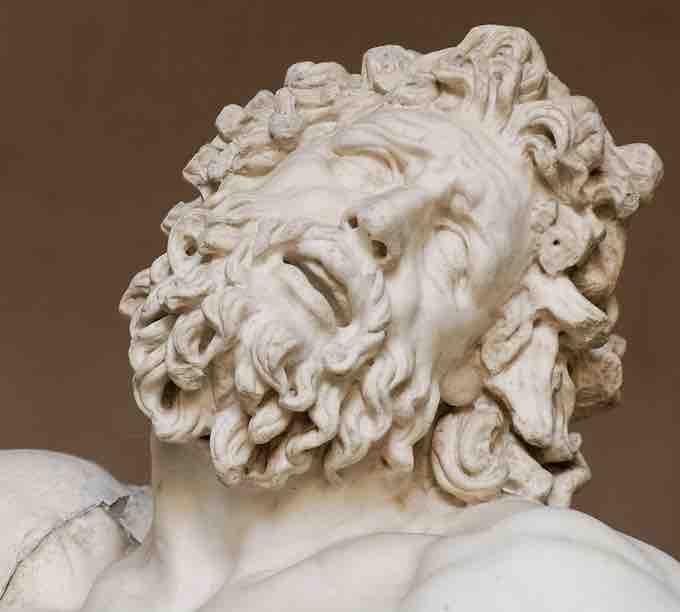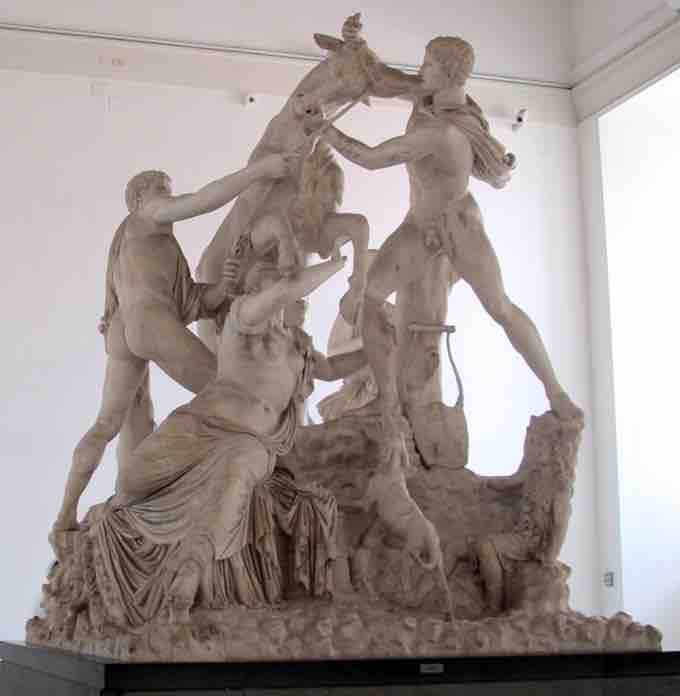The Romans conquered Greece in the second century BCE, and the peninsula fell to Roman power in 146 BCE. Greece was a key province of the Roman Empire, and the Roman's interest in Greek culture helped to circulate Greek art around the empire, especially in Italy, during the Hellenistic period and into the Imperial period of Roman hegemony. Greek sculptors were in high demand throughout the remaining territories of the Alexander's empire and then throughout the Roman Empire. Famous Greek statues were copied and replicated for wealthy Roman patricians and Greek artists were commissioned for large-scale sculptures in the Hellenistic style. Many Greek sculptures that we have today survive only as marble Roman copies (often they were originally cast in bronze). Some of the most famous colossal marble groups were sculpted in the Hellenistic style for wealthy Roman patrons and for the imperial court. Despite their Roman audience, these were purposely created in the Greek style and continued to display the drama, tension, and pathos commonly found in Hellenistic art.
Laocoön
Laocoön was a Trojan priest of Poseidon who warned the Trojans, "Beware of Greeks bearing gifts," when the Greeks left a large wooden horse at the gates of Troy. Athena or Poseidon (depending on the story's version), upset by his vain warning to his people, sent two sea serpents to torture and kill Laocoön and his sons. A Hellenistic marble statue (attributed by Roman historian Pliny the Elder to the sculptors Agesander, Athenodoros, and Polydorus from the island of Rhodes) was created in the early first century CE to depict this scene .

Laocoön
Agesander, Athenodoros, and Polydorus of Rhodes. Laocoön. Marble. Early first century BCE.
Similar to other examples of Hellenistic sculpture, the marble sculpture of Laocoön and his sons depicts a chiastic scene filled with drama, tension, and pathos. The figures writhe as they are caught in the coils of the serpents. The faces of the three men are filled with agony and toil, which is reflected in the tension and strain of their muscles. Laocoön stretches out in a long diagonal from his right arm to his left as he attempts to free himself. His sons are also entangled by the serpents, and their faces react to their doom with confusion and despair . The carving and detail, the attention to the musculature of the body, and the deep drilling, seen in Laocoön's hair and beard, are all characteristic elements of the Hellenistic style.

Detail of Laocoön's face
Agesander, Athenodoros, and Polydorus of Rhodes. Deatil of Laocoön's face. Marble. Early first century BCE.
Farnese Bull
The Farnese Bull , named for the patrician Roman family who owned the statue in the Renaissance, is believed to have been created at the end of the second century BCE for the collection of Asinius Pollio, a Roman patrician. Pliny the Elder attributes the statue to the artists and brothers Apolllonius and Tauriscus of Trallles, Rhodes. The colossal marble statue, carved from a single block of marble, depicts the myth of Dirce, wife of the King of Thebes, who was tied to a bull by the sons of Antiope to punish her for mistreating their mother. The composition is large and dramatic, and demands the viewer to encircle it in order to view and appreciate the narrative and pathos from all angles. The various angles reveal different expressions, from the terror of Dirce, to the determination of Antiope's sons, to the savagery of the bull.

Farnese Bull
Apollonius and Tauriscus of Tralles, Rhodes. Farnese Bull. Marble. Ca. 200-180 BCE.